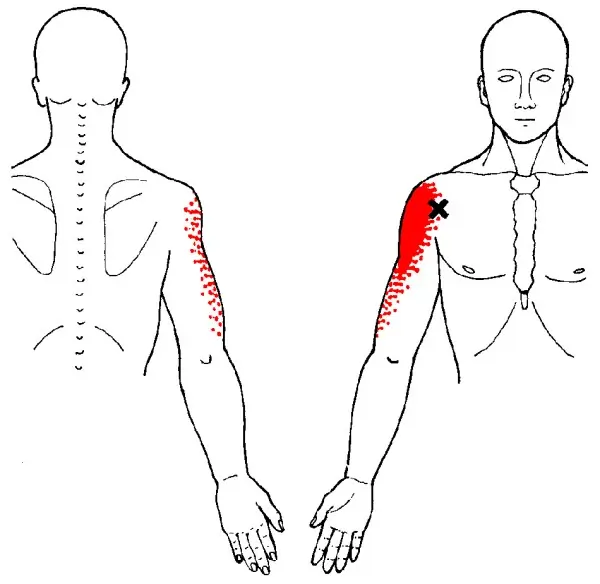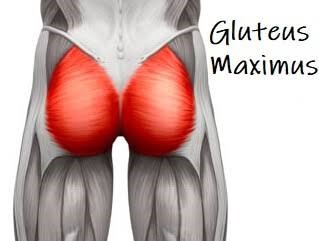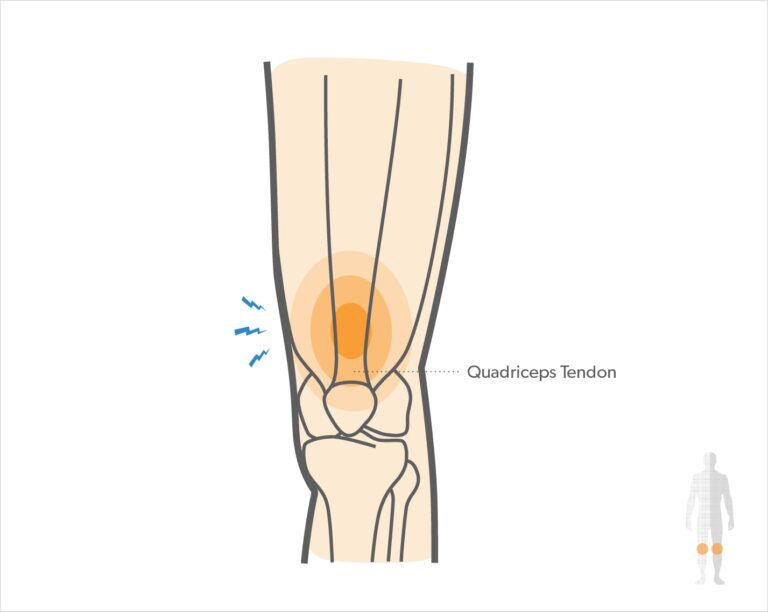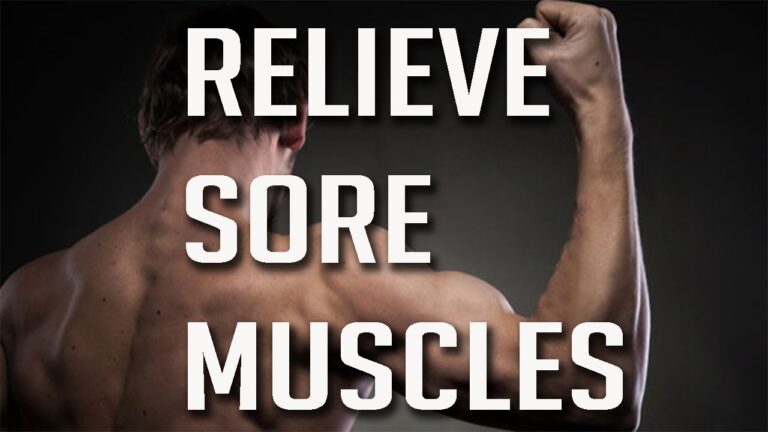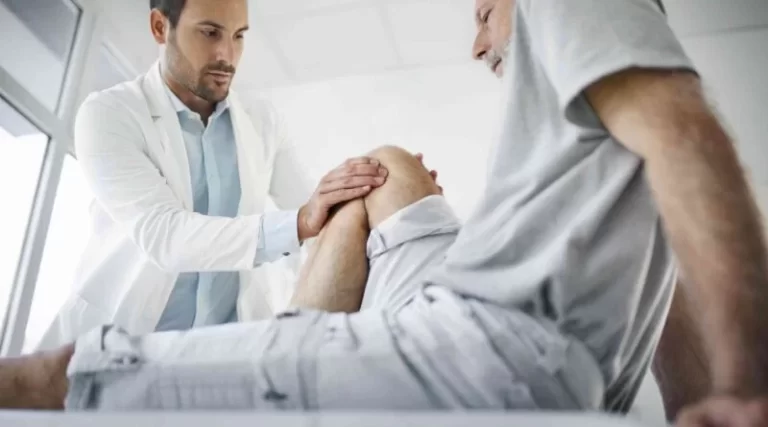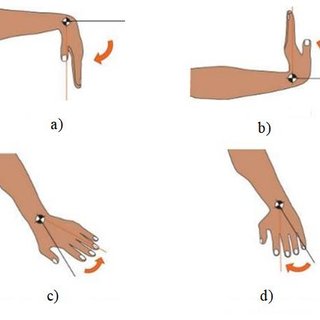Deltoid muscle pain: Cause, Symptoms, Diagnosis, Treatment, Exercise
Deltoid muscle pain mostly located in your shoulder, you will feel pain while moving your shoulder like lifting or carrying activity.
- The deltoid muscle is a round muscle that is located around the top of the upper arm & shoulder.
- The main function of the deltoid muscle is to help lift & rotate the arm.
- Their muscle is three parts of the deltoid muscle which connects the collarbone, shoulder & shoulder blade to the upper arm.
- These three parts of the deltoid muscle are referred to pain as the anterior, middle, & back arm.
- This muscle pain is due to overusing of the deltoid muscle & deltoid muscle strain.
- Pain & swelling is present in the deltoid muscle
- If the patient feels the pain result from many causes, such as arthritis, neck problems, & other health issues. But if the discomfort is coming from the front, side, with the back of the shoulder joint — mostly when the lifting the arm so that due to a deltoid muscle injury.
- In some emergency signs please contact to the doctor.
- In the early phase for reliving the pain relief used to RICE principle.
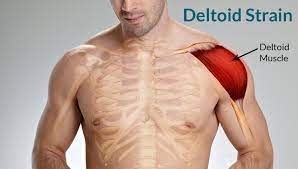
Table of Contents
What is Deltoid muscle?
- The deltoid muscle is a thick & triangular shoulder muscle.
- This muscle is known as deltoid because this muscle shape looks like as Greek letter ‘delta’ (?).
- This muscle has a wide origin which is spanning the clavicle, acromion & spine of the scapula.
- It is passed inferior with the surrounding the glenohumeral joint [ GH joint ] & inserts onto the humerus.
- The deltoid muscle is formed of the acromial, clavicular & scapular spinal parts.
- Acromial part = middle fibers which abduct the arm, while the clavicular & scapular spinal parts play a significant role in the stabilization, ensuring the steady plane of the abduction movement.
- The clavicular part = anterior fibers act as a flexor & internal rotator IR of the arm
- The scapular spinal part = posterior fibers which extend & externally rotate ER of the arm.
What is the cause of deltoid muscle pain?
- The most common causes of deltoid muscle pain are overuse of muscle injuries & strains in the muscle.
- People who use the shoulders joint & deltoid muscles repetitively, mostly in athletes, which is an increased risk of deltoid muscle injury.
- A strain in the deltoid muscle is occur suddenly result of heavy lifting/an accident, like a trip & fall.
- Most of the injuries to the deltoid muscle are take time to develop & caused by too many activities like swimming, lifting weights & playing baseball.
- Repetitive movements
- Adding weight/stress to the deltoid muscle for long periods — such as carrying to a heavy backpack — which is damage the muscle & cause pain.
- Some sports, activities such as swimming/ tennis & other activities for to require a repetitive movement which is also increased to the risk of the straining the deltoid muscle.
- Poor posture
- Changes in the posture which is impacting the way the shoulder joint moves, affecting the shoulder blade’s position & how well the parts of the shoulder joint work together.
- Over time, this extra pressure is add strain to the muscle, causing discomfort & reduced mobility.
- Acute injury
- patient feel the Sudden pressure/trauma to the deltoid muscle which is causing a tear.
- This is happen with movements such as breaking a fall with the outstretched arm & lifting too much weight.
What is Symptoms of the deltoid muscle pain?
- The patient usually feels deltoid pain/soreness in the shoulder joint.
- Symptoms are depending on the severity of the strained muscle.
- Deltoid muscle strains are classified into three grades.
- Grade one – 1
- If the patient presents a grade one strain, the patient use the arm normally but have some tightness/soreness in the shoulder.
- The shoulder joint is slightly swollen.
- Using the arm is produce slight pain, but the range of movement [ ROM ] is often not restricted.
- Grade two -2
- If in the patient presence of Grade two strains are partial deltoid muscle tears.
- With the grade two strain, it is trouble using/lifting the arm normally.
- The patient is in sudden pain while trying to use the arm & the shoulder joint is moderately swollen.
- In this condition doing push-ups, presses/lifting the arm in any direction is cause pain.
- Grade three -3
- Grade three strains more severe/complete deltoid muscle tears.
- Muscle tears are lead to severe pain & an inability to move the arm normally, at all.
- The shoulder joint is very swollen.
- Due to the pain, movement of the arm is severely limited/impossible.
- Patient feel the Muscle tightness, weakness & soreness in the deltoid muscle.
- When the deltoid muscle is injured, a person feels the pain & tenderness at the front, side/back of the shoulder joint, mostly when lifting the arm.
- If the deltoid muscle is torn & it is produced to cause swelling & bruising.
- In the patient Limited to the range of movement = ROM.
- In the More serious muscle damage do they interfere with the normal movement.
- If the patient does struggle to comfortably lift the arm / move it 90 degrees to the side of the body, it may be increased to injury in the front of the muscle.
- When the patient feels more pain lift the arm from the side upwards so that damaged the mid/top part of the deltoid muscle.
When to see the doctor for the deltoid muscle pain?
- In serious cases, shoulder joint pain is due to :
- Restrict all movement of the arm.
- If the patient feels the popping noise from to muscle
- If the patient feels Continue for the several weeks
- If the extreme discomfort even when at rest
- Impact the sleep
Diagnosing of the deltoid muscle pain?
- For the deltoid muscle pain, the doctor can diagnose with the how-to occur a severe deltoid injury which is performed by a physical exam & reviewing what activities in the life could have caused this pain.
- If the doctor suspects the pain results from a full deltoid muscle tear/another serious injury, it is referred to an orthopaedic doctor which is directly the best course of action.
What is the treatment of deltoid muscle pain?
- For the Pain relief:
- The first steps after the injury of the deltoid are rest, ice, & heat.
- The icing on the deltoid muscle right after the injury which is helping to reduce the inflammation&pain.
- when the patient has a minor injury, 15 minutes on & 15 minutes off a few times throughout the day for the 1 to 2 days enough.
- If the patient has to a more serious injury, so that still to swelling, so that ice applied for a few more days.
- After the pain & swelling are reduced, the patient is start to apply heat, usually one to five days after the injury. Throughout this time, resting the shoulder joint is help to give the time to heal.
- The patient is also taking over-the-counter pain relievers to help them reduce pain.
- Applied to Gentle stretching which is help to reduce pain by to deltoid strain.
- Try to hold the arm across to the chest& raise clasped hands above the head.
- These stretches help to increase the range of motion -ROM & flexibility.
- This helps reduce the pain by allowing the shoulder joint to move more freely.
- The doctor is recommend the following treatments when the patient is present of the muscle stain depending on the severity of the deltoid muscle strain:
- Grade 1 of the deltoid muscle strain:
- To reduce the swelling, use a compression wrap & apply to ice periodically for 24 hours after the injury.
- Then use a heating pad to relieve pain & tension.
- It is also essential to allow the shoulder joint to rest.
- Grade 2 of the deltoid muscle strain:
- Applying the ice periodically for 3–5 days reduce the swelling.
- After an acute injury of muscle, alternating between ice&heat packs which is also help to relieve the pain.
- Allow the time the injury for to heal & reduce the length & intensity of the exercise which is routine during this period.
- Grade 3 of the deltoid muscle strain:
- Apply ice to the injury, then elevate part of the pain area when possible try to avoid using the affected arm & shoulder joint.
- Use Over-the-counter painkillers which is reduce the discomfort.
- If the patient’s pain does not diminish over time with the home remedies, a physician/a rehabilitation specialist offers additional recommendations to design the speed recovery & manage the pain.
What is Recovery of deltoid muscle pain?
- If the patient has a minor strain so that recovery takes one to two weeks.
- When partial tearing occurs in the patient for 4 to 6 weeks.
- But when the occur A serious tear in the muscle, it is take up to 4 months to heal.
- Rest, ice, & heat are the best first steps for recovery.
- The patient continues to rest the arm till the pain which is starting to subside.
- If the patient has +pain in a minor deltoid muscle injury, it is eased back into exercising after a few days.
- the patient does not have to completely stop working out unless the work so that patient becomes too painful.
- If the patient has a more serious deltoid muscle injury, stop exercising the arm for at least 1 to 2 weeks to give the injury time to rest.
- Once the pain is decreased, the patient is start to perform the strengthening & stretching exercises to help restore function.
- If the patient starts these exercises & find that till have a lot of pain, stop & take more time to rest.
- So Preventing re-injury is one of the most important parts of recovery.
- Focusing on restoring range of motion = ROM first will help to ease back into exercise without hurting the Warming up the stretching/exercising is also help them prevent further injury to the deltoid muscle.
- Some stretches& exercises which is helping them recover from muscle pain:
- Pull & hold the arm across the chest for 10 to 30 seconds.
- Clasp the hands behind the back & stretch out the arms behind.
- then Hold this stretching position for 10 to 30 seconds
- Try to do isometric resistance exercises, like pressing the hands into a wall.
- after that Add the dynamic resistance exercises once we can move to the shoulder joint comfortably, like as bent-over and upright rowing & overhead presses with the lightweights.
What is stretching for the deltoid muscle pain?
- Dynamic bear hug stretch
- Standing chest and shoulder stretch
- Cross-body shoulder stretch
- Modified downward dog
Dynamic Bear Hug Stretch:
- The patient is in Stand tall with the feet are rough to shoulder-width apart, then engaged core muscle & posture tall & straight.
- Then Reach the arms out & wide, as though to going to hug someone.
- When the patient feels a light stretch across the front of the shoulders joint & chest, bring the arms across the chest, then hug by the patient’s self-right arm on the top of the left, till the patient feel a stretch at the back of the shoulders joint.
- In the controlled motion, swing the arms out wide again.
- Then Reach the end of the range of motion = ROM before the swing the arms back into a hug position, so that this time with he left arm on the top of the right.
- This stretching is Continued for 30 seconds.
- After that do the Rest, then repeat the two more rounds.
Standing chest and shoulder stretch:
- The patient is in Stand tall with the feet roughly for them hip-distance apart, so that engaged to core muscle & shoulders joint back.
- Must be focused on maintaining good posture.
- Then Reach behind the back with both arms & clasp the hands together.
- Take a breath in & as the exhale, lift the hands behind to as high as comfortably till they feel a good stretch across the front of the shoulders & chest.
- Hold the stretching position & breathe deeply for 30 seconds.
- Then Release & repeat two more times.

Cross-body shoulder stretch:
- The patient is Standing position in a tall with the feet are at hip-distance apart & the muscle of the core is engaged.
- For good posture: stack the ears over the shoulders, hips, knees, & ankles joint.
- Bring your left arm across the body at shoulder height, reaching past your right shoulder.
- Use the right hand to grab the left forearm.
- Gently pull the left arm closer to the body till the patient feel a stretch toward the middle of the left shoulder.
- Hold the stretching position & breathe deeply, for the30 seconds.
- After that Rest, then repeat this exercise two more times before the witching sides.
Modified downward dog:
- The patient is Stand tall behind a sturdy desk, chair& table.
- Keep the feet roughly at them hip-distance apart.
- Then Engage the core & roll the shoulders joint back to make sure to be in a standing position with a good posture.
- Place the hands flat on top of the desk, then arms extended fully.
- The patient is must be keeping the arms, back & legs fully extended position throughout this stretch position, only flexing at the hips joint.
- Patient Take a deep breath in & exhale, begin walking the feet back till the body forms a diagonal line.
- From here, tip to torso forward & press the hips joint back, extending the arms over the head as the patient move.
- When the patient feels a good stretch at the front of the shoulders joint & chest as well as through the hamstrings & glutes hold the position.
- Then the patient is taken to Breath deeply & try to relax into the stretch for 30 seconds.
- Release the patient, then repeat two more times.
For the Anterior Deltoid muscle stretching & exercise :
- Do behind-the-back stretches to open up the front of the shoulder joint:
- In the Stand position with the feet about the hip joint -width apart, shoulders relaxed so that the shoulder joint blades are tucked down along either side of the spine.
- Then Clasp the hands behind the lower back, then lift them away from the body, keeping the elbow joint straight.
- Lift the till the feel a stretch, then hold the stretch for 15 to 30 seconds.
- Stay upright while doing this stretch – resist the urge to fold forward.
- If the patient has difficulty with clasping the hands behind the back, hold a towel between the hands.
- Do this stretching a total of 2/3 times.
- Isolate internal rotation to target the anterior deltoid muscle:
- Lie on the back with the arms extended out from the shoulders joint.
- Raise the one hand so that the elbow joint is at a 90-degree angle & the forearm is perpendicular to the body.
- Then Slowly lower the hand till it is resting beside the body.
- Hold the stretching for a second, then return to in start.
- Do the 3 to 4 sets of 20 repetitions of this exercise, then repeat this exercise with the other arm.
- Only lower the arm as far as to go without pain.
- If the can’t do the full repetitions at the first, do as much as without pain, then try to add a few more repetitions to each week.
- For the Stretch of the anterior deltoid muscle by the use of the doorway:
- The patient is Stand in a doorway with the feet about the hip joint -width apart.
- Place the one palm on the doorway then slightly lower than the shoulder joint, then bend the elbow joint slightly.
- Then turn the body away from the extended arm till the patient feel a stretch.
- Hold this stretching position for 10 to 20 seconds, then repeat this exercise on the other side.
- The patient is also using the wall/a stationary vertical bar on the pole rather than a doorway.
- Lengthen the anterior deltoid muscle with the bridge position:
- The patient is in Starting position in a sitting position with the knees joint bent & feet flat on the floor & hands are next to the body & fingers are pointed forward.
- The patient is Inhale & press the feet & hands into the floor as they lift the hips joint up into a bridge position with the torso & thighs are parallel to the floor.
- Then Straighten the legs at a time without lowering the hips joint to get into the bridge position.
- Relax the neck & lower the head down.
- Hold the exercise position for 30 seconds, then release for to a sitting position.
- When the first get started, the patient is not able to hold the position for the whole 30 seconds.
- Then Start with the 5 seconds, then gradually work to way up.
- The patient is Breathe slowly & deeply while holding this position, in through to nose & out of through the mouth.
For the Lateral Deltoid muscle exercise & stretching :
- Basic side of deltoid muscle stretch:
- The patient is Stand with the feet about the hip joint -width apart & positions one arm across the chest with the elbow joint slightly bent.
- Then Grasp the just above the elbow joint with the other hand & push the elbow joint towards the chest.
- Hold the stretching position for about 30 seconds, then this exercise is repeated with the other arm.
- When the patient pushes the gently so that till a feel a stretch.
- Keep the shoulders joint relaxed with the shoulder blades tucked alongside either side of the spine.
- Pendulum motion to stretch the deltoid muscle:
- The patient is in a standing position with the feet about the hip joint – width apart, next to a counter-top/table.
- Lean forward, placing one hand on the counter-top/table for support.
- then Gently swing the other arm forward & back such a pendulum, keeping the body still.
- Repeat this moving the arm side to side, then into a circular motion.
- Turn around & do the same movements with the other arm.
- Do this 2 sets of the 10 repetitions of this exercise on each side.
- Keep the back flat & shoulders joint back with the soft bend in the knee joint.
- Place the arm around the back to stretch anterior & lateral deltoid muscle.
- The patient is Stand with the feet about hip-width apart.
- Place the one arm behind the back & bend the elbow joint to 90 degrees.
- Then grab the elbow joint with the opposite hand & pull the arm across the back towards the opposite shoulder joint till the patient feel a stretch.
- Hold this stretch position for 15 to 30 seconds, then repeat this exercise with the other side.
- Complete this stretch 3 times on each side, making sure to breathe deeply as the hold the stretch.
- Keep the shoulders joint relaxed with the shoulder blades tucked down along the sides of the spine.
For the Posterior Deltoid muscle stretching & exercise.
- Crossover arm stretches:
- Relax the shoulder joint, pulling them back so that the shoulder blades fall along to either side of the spine. then reach one arm across the body & grip it at the upper arm with the other hand.
- Then Gently pull this stretch as far as across the chest as possible till the feel a stretch at the back of the shoulder joint. Hold this stretching for 30 seconds, then relax for 30 seconds.
- Repeat this stretching position with the other arm.
- Do this exercise 4 repetitions on each side for this exercise.
- Be sure to grab the upper arm, not the elbow joint.
- Don’t push against/put any pressure on the elbow joint.
- The sleeper stretch to activate the supporting muscles:
- The patient is Lying with the lower arm bent at a 90-degree angle so that the forearm is perpendicular to the body. Use the other arm to gently push the arm down till the patient is feel a stretch.
- Hold this stretching position for 30 seconds, breathing deeply, then relax the arm for 30 seconds.
- Then Repeat with the other side.
- Do the 2 to 3 repetitions & then switch sides.
- Hold this stretching gently for 15 to 30 seconds on each side.
- Posterior deltoid muscle with the bent-over to horizontal abduction:
- The patient is lying on the stomach on a bench/bed, allowing one arm to hang over the side.
- Start with the arm hanging straight down, then slowly raise it to eye level & keep the arm straight.
- Then slowly lower this position to the starting position.
- Do the 3 sets of the 10 repetitions, then switch & do the other arm.
- Then Only raise the arm as far as without the pain.
- Once the exercise becomes too easy for performance, the patient is hold a dumbbell to add resistance & build further strength in the deltoid muscle.
- If the patient is not lifting the arm above the torso, then try to lift it with the elbow joint bent & gradually work up to straighten the arm as the patient lift it.
Anterior Deltoid Raise:
- The patient is in the Standing position for the exercise with the feet hip-width apart.
- The patient is holding a dumbbell in each hand with the arms at the sides.
- Must be Keeping the arms straight then slowly lifting the weights directly in front of to shoulder joint height with the palms facing to each other.
- Then Lower back down into the starting position & repeat this exercise.
Callahan Press :-
- The patient is Stand with the feet hip-width apart.
- The patient is holding a dumbbell in each hand.
- Raise the arms out to the sides with the elbow joint bent at 90 degrees.
- Upper arms should be in line with the shoulder joint & hands should point toward the ceiling.
- This is the starting position for the exercise.
- Bring the forearms in front of & turn the palms in toward the face.
- Then reverse the movement to exercise & return to the starting position.
- Press the weights of the dumbell directly above the shoulder joint & then reverse the movement of exercise& return to the starting position.
- This is complete one rep. of exercise.
Standing Arnold Press:
The patient is in a standing position with the feet hip-width apart.
The patient is holding a dumbbell in each hand just under to chin & palms facing you.
Then press the dumbbells overhead to rotate the palms out.
The patient is Pause at the top, then lower to dumbbells back down into starting position.
Then rotating the palms back toward you.
Repeat this exercise 2 – 3 times.
Jerk Press:
- The patient is in Starting position with the feet hip-width apart.
- The patient is holding a pair of dumbbells in front of the shoulder joint, palms facing each other.
- This is the starting position for the exercise.
- In the one explosive motion, press the weights overhead while jumping to one foot forward & one foot back so that land in high lunge.
- Step the in the front foot back into the starting position, bringing the weights back at to shoulder joint height.
- Then Repeat this exercise 2-3 times.
Hammer Curl to Press:
- The patient is Stand with the feet are hip-width apart.
- The patient is holding a dumbbell in each hand with the arms at the sides, palms facing each other.
- Keeping the elbow joint tucked into the sides, curl dumbbells up to the shoulder joint without moving the upper arms.
- Press the dumbbells above the head till the arms are straight, keeping the palms facing each other.
- Lower the weights back down to the shoulders, then lower the arms all the way straight down to the sides.
- Repeat this exercise 2-3 times.
Bent-Over Lateral Raise [Reverse Fly]:
- The patient is in a standing position with the feet hip-width apart.
- The patient is holding a dumbbell in each hand at the sides.
- Hinge at the hip joint, keeping the back flat & allowing the arms to hang straight down with the palms facing each other.
- With the elbows joint slightly bent, raise the arms out to the sides till the parallel with the back.
- Slowly lower the weights & repeat this exercise.
Sumo Circle Chop:
- The patient is Stand with the legs wide & toes turned out 45 degrees.
- The patient is holding one dumbbell with both hands in front of the chest.
- This is the starting position of this exercise.
- Push the hips back as slowly lower into a sumo squat must keep the back straight.
- Push through the heels & straighten the legs.
- This exercise is Starting on the left side.
- Circle the dumbbell around the head, rotating it around & back to the left.
- As they bring the dumbbell around to the front, continue this motion & pivot both feet to the left.
- Then Bend both knees into a lunge & straighten the arms to slowly lower than dumbbell in front of the knee joint
- Straighten the legs & pivot back into the starting position, bringing the dumbbell back in front of the chest.
- Repeat this exercise on another side.
What is the Prevention of deltoid muscle pain?
- The patient reduces the risk of straining a deltoid muscle by making sure the muscle is ready to handle strenuous activity, & using the muscle properly.
- some prevention tips are available :
- Always do the Warm-up before the exercise.
- Do the Stretch daily to improve the range of motion = ROM & flexibility.
- Do the Rest after some exercise.
- Take the days off/work for different muscle groups on the different days.
- Than Strengthen the deltoid muscles so that it does the handle more strenuous exercise.
- The patient is must also strengthen the core so that it helps support the shoulder joint while exercising.
- If the patient work at a computer, make sure the keyboard is positioned so that positioned on the shoulder joint.
- Don’t strain up & down when typing.
- Always do the Practice for to good posture.
- Sports therapists, fitness trainers, & medical professionals can offer tailored advice & suggestions for preventing injuries while playing a particular sport.

